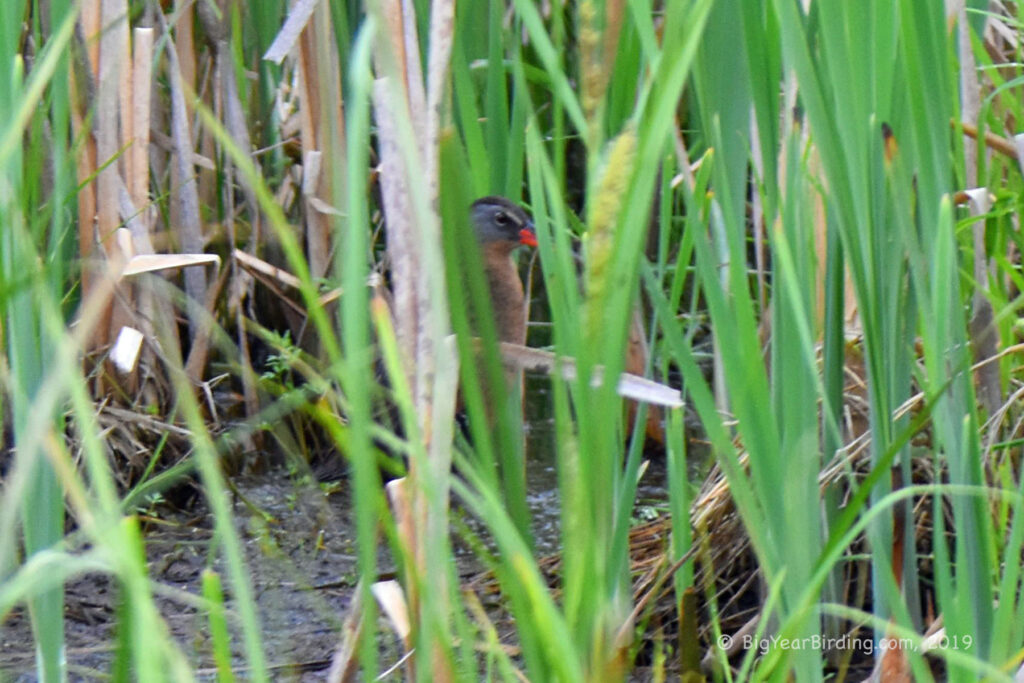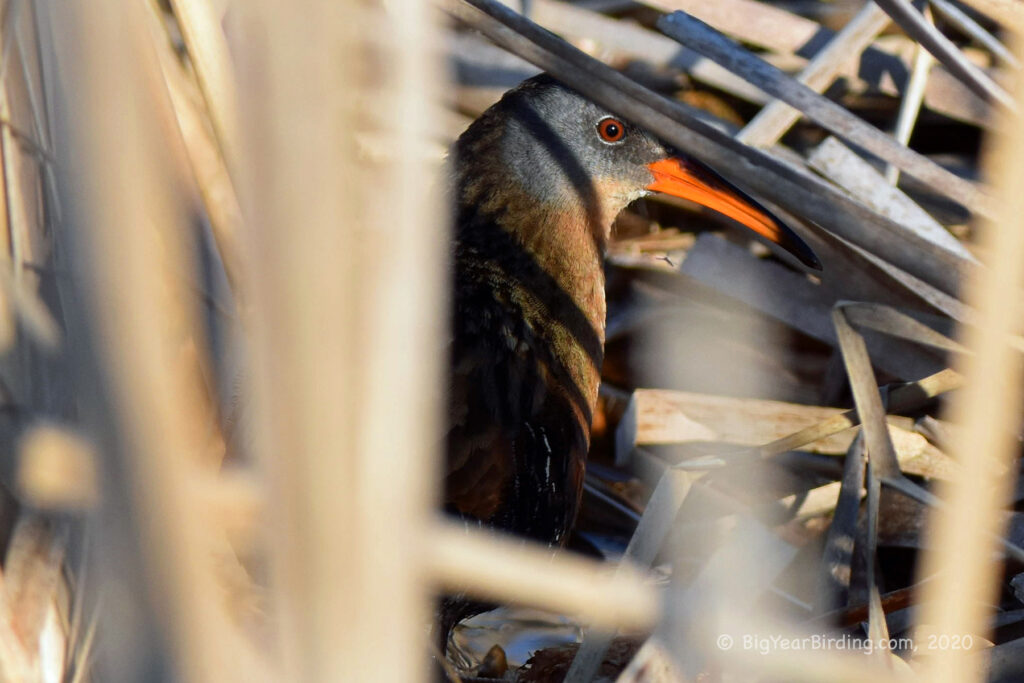The Virginia Rail is a small, secretive bird found in wetlands and marshes throughout much of North America. It is approximately 9-11 inches long and weighs between 2-4 ounces. Its body is a rich brown color, with darker stripes and streaks on its back and a white patch on its undertail. It has a short, curved bill and long toes adapted for walking on mud and floating vegetation.
One of the most distinguishing field marks of the Virginia Rail is its call. It produces a series of grunts, clicks, and squeals that sound like a piglet or a snorting horse. Its secretive nature and preference for dense vegetation make it difficult to spot, but it may occasionally be seen walking along the edge of a marsh or swimming across a small pond.

Virginia Rails are primarily non-migratory, with some populations in the southern parts of their range remaining year-round. However, birds in the northern parts of their range may migrate south for the winter. They are generally considered a wetland obligate species, meaning that they require wetland habitats for breeding and feeding. They feed on a variety of small invertebrates, including insects, snails, and worms.
During breeding season, Virginia Rails construct nests in dense vegetation near water. Females typically lay 5-13 eggs, which hatch after approximately three weeks of incubation. Both parents take turns incubating the eggs and caring for the chicks, which fledge after 3-4 weeks.
Despite their relative abundance, Virginia Rails face a number of threats. Wetland loss and degradation, pollution, and climate change all pose significant challenges to the long-term survival of this species. Conservation efforts to protect and restore wetland habitats and reduce human impacts are critical to ensuring the continued survival of the Virginia Rail and other wetland-dependent species.

